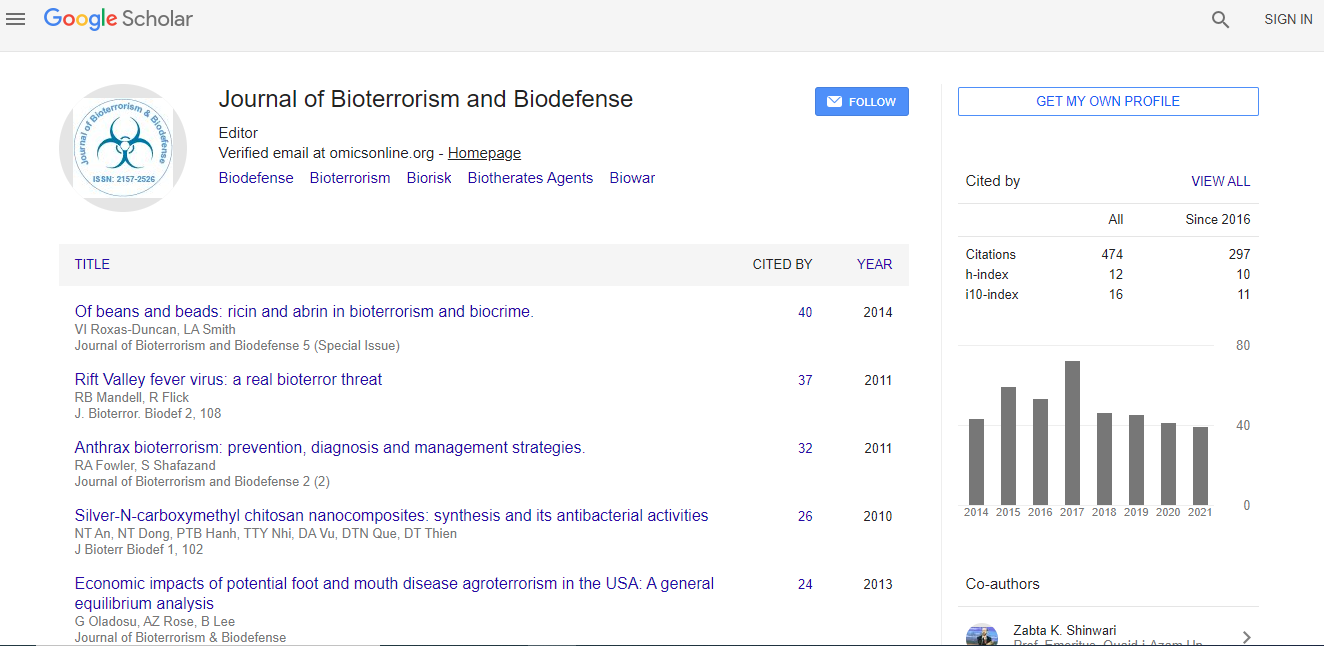Review Article
The Immune System in the Pathogenesis and Prevention of Prion Diseases
Annissa Furr1,2, Alan J Young1,2* and Jurgen Richt3
1Department of Veterinary and Biomedical Sciences, South Dakota State University
2Medgene Labs LLC, Brookings, SD
3Department of Diagnostic Medicine/Pathobiology, Kansas State University, Manhattan, KS
- *Corresponding Author:
- Dr. Alan J. Young
Department of Veterinary and Biomedical Sciences
South Dakota State University
Brookings, SD. 57006, USA
Tel: 605-688-5982
Fax: 605-688-6003
Email: alan.young@sdstate.edu
Received Date: August 31, 2011; Accepted Date: January 27, 2012; Published Date: February 16, 2012
Citation: Furr A, Young AJ, Richt J (2012) The Immune System in the Pathogenesis and Prevention of Prion Diseases. J Bioterr Biodef S1:012. doi: 10.4172/2157-2526.S1-012
Copyright: © 2012 Furr A, et al. This is an open-access article distributed under the terms of the Creative Commons Attribution License, which permits unrestricted use, distribution, and reproduction in any medium, provided the original author and source are credited.
Abstract
Bovine spongiform encephalopathy (BSE) remains a significant threat to both human and animal health in the United States and in particular a threat to the agriculture industry. The diagnosis of BSE in a single cow within the United States in 2003 led to net losses of billions of dollars and additional studies have pointed to significant sociological consequences of BSE cases in Canada, particularly in terms of the dissolution of rural communities. Unlike other infectious diseases, BSE and other prion diseases are caused by a misfolded protein (PrPSc) that is highly resistant to normal nucleic acid-based disinfection and sterilization procedures. Disease progression is linked to the progressive conversion of a normal cellular molecule (PrPC) into the infectious form (PrPSc) mainly on cells of the immune and neurological systems, leading to formation of multimolecular fibrils associated with progressive neurodegeneration and dementia. Due to the unique nature of this infectious particle and the fact that the disease is caused by a misfolded form of a normal self-protein, development of vaccines and other therapeutics have been challenging. The molecular
mechanisms behind PrPSc targeting to lymph node germinal centers and the failure of immune recognition, remain unclear. Here, we review the current knowledge of prion disease biology, the role of the immune system in disease transmission and pathogenesis and efforts towards development of therapeutics and vaccines. While feed-based control of BSE has been successful in limiting transmission and spread of the disease, the recent description of apparently spontaneous and/or genetic forms of BSE underlies the importance of continued research into tools to counter this unique disease threat to the world economy as well as animal and human health.

 Spanish
Spanish  Chinese
Chinese  Russian
Russian  German
German  French
French  Japanese
Japanese  Portuguese
Portuguese  Hindi
Hindi 